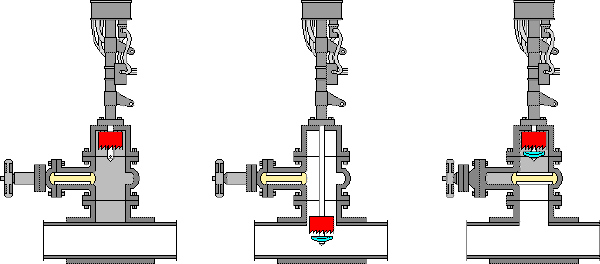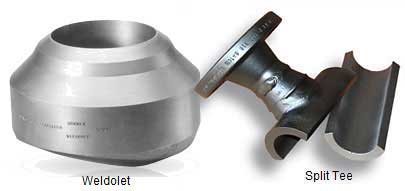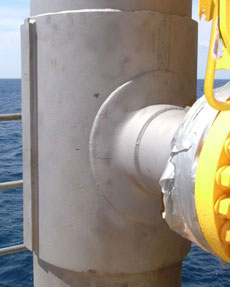Pipeline hot tap is a connection made to an existing pipeline without the interruption of emptying that section of pipe. This means that a pipe can continue to be in operation whilst maintenance or modifications are being done to it. The process is also used to drain off pressurised casing fluids.

Typical connections consist:
- Tapping fittings like Weldolet®, Reinforced Branch or Split Tee. Split Tees often to be used as branch and main pipe has the same diameters.
- Isolation valve like Gate or Ball valve.
- Hot tapping machine which includes the cutter, and housing.
Mechanical fittings may be used for making hot taps on pipelines and mains provided they are designed for the operating pressure of the pipeline or main, and are suitable for the purpose.
- Design: ASME B31.1, B31.3, ASME B31.4 & B31.8, ASME Sec. VIII Div.1 & 2
- Fabrication: ASME Sec. VIII Div.1
- Welding: ASME Sec. IX
- NDT: ASME Sec. V
There are many reasons to made a Hot Tap. While is preferred to install nozzles during a turnaround, installing a nozzle with equipment in operation is sometimes advantageous, especially if it averts a costly shut down.
Remarks before made a Hot Tap
- A hot tap shall not be considered a routine procedure, but shall be used only when there is no practical alternative.
- Hot Taps shall be installed by trained and experienced crews.
- It should be noted that hot tapping of sour gas lines presents special health and metallurgical concerns and shall be done only to written operating company approved plans.
- For each hottap shall be ensured that the pipe that is drilled or sawed has sufficient wall thickness, which can be measured with ultrasonic thickness gauges. The existing pipe wall thickness (actual) needs to be at least equal to the required thickness for pressure plus a reasonable thickness allowance for welding. If the actual thickness is barely more than that required for pressure, then loss of containment at the weld pool is a risk.
- Welding on in-service pipelines requires weld procedure development and qualification, as well as a highly trained workforce to ensure integrity of welds when pipelines are operating at full pressure and under full flow conditions.

Hot Tap setup
For a hot tap, there are three key components necessary to safely drill into a pipe; the fitting, the valve, and the hot tap machine. The fitting is attached to the pipe, mostly by welding.
In many cases, the fitting is a Weldolet® where a flange is welded, or a split tee with a flanged outlet (see image above).
In many cases, the fitting is a Weldolet® where a flange is welded, or a split tee with a flanged outlet (see image above).
Onto this fitting, a valve is attached, and the hot tap machine is attached to the valve. For hot taps, new bolts, gaskets and a new valve should always be used when that components will become part of the permanent facilities and equipment.
The fitting/valve combination, is attached to the pipe, and is normally pressure tested. The pressure test is very important, so as to make sure that there are no structural problems with the fitting, and so that there are no leaks in the welds.
The hot tap cutter, is a specialized type of hole saw, with a pilot bit in the middle, mounted inside of a hot tap adapter housing.
The hot tap cutter is attached to a cutter holder, with the pilot bit, and is attached to the working end of the hot tap machine, so that it fits into the inside of the tapping adapter.
The tapping adapter will contain the pressure of the pipe system, while the pipe is being cut, it houses the cutter, and cutter holder, and bolts to the valve.
Hot Tap operation

Split Tee
The Hot Tap is made in one continuous process, the machine is started, and the cut continues, until the cutter passes through the pipe wall, resulting in the removal of a section of pipe, known as the "coupon".
The coupon is normally retained on one or more u-wires, which are attached to the pilot bit. Once the cutter has cut through the pipe, the hot tap machine is stopped, the cutter is retracted into the hot tap adapter, and the valve is closed.
Pressure is bled off from the inside of the Tapping Adapter, so that the hot tap machine can be removed from the line. The machine is removed from the line, and the new service is established.
Hot tapping is also the first procedure in line stopping (isolation of a piping system to provide a shut off where none exist) , where a hole saw is used to make an opening in the pipe, so a line plugging head can be inserted, as can be seen from the figure above. Physically hot tap is figured as below:
Sources : http://en.wikipedia.org/wiki/Hot_tapping


No comments:
Post a Comment